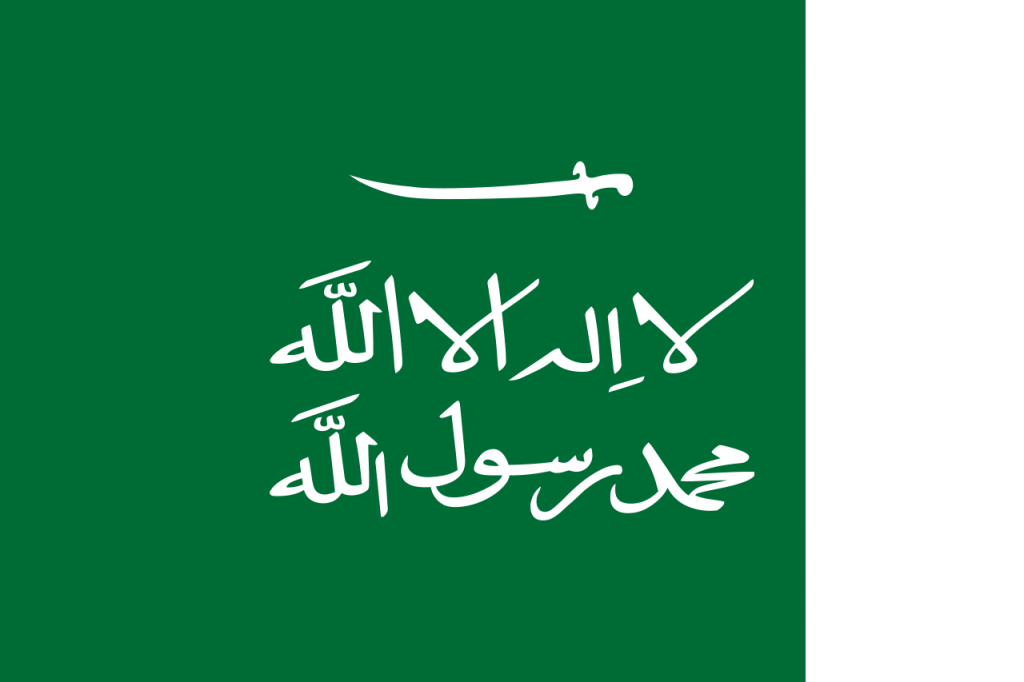The current flag of Saudi Arabia has been in use since 1973 and it sure is an interesting one. It’s in that rare school of national flags to have words on it, as well as a big sword! You might notice that 1973 is not a long time ago. The country itself has existed in its modern form since 1932 (which you can read about here), but its history goes back way longer than that. And even the Saudi flag they have now, how much do you know about it? Well if you don’t know much, let’s learn about it now!
Current Flag of Saudi Arabia
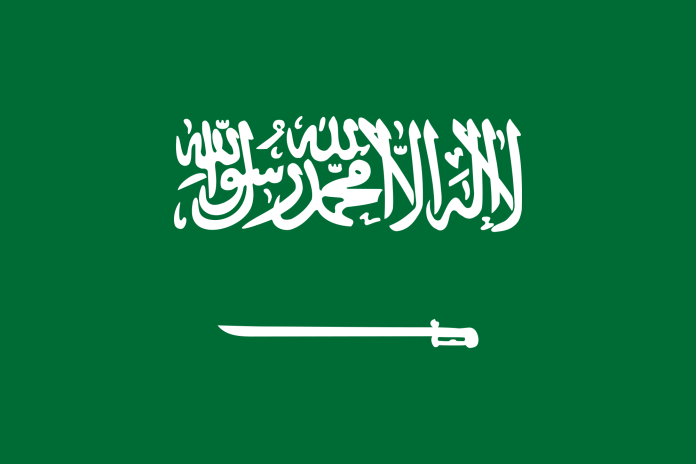
Let’s start with the current flag, the one we know. Most important to focus on is the writing, a traditional Arabic inscription of the shahada in thuluth calligraphy script. The shahada is one of the five pillars of Islam, an oath given by Muslims to affirm their faith and the honest, true recitation of which serves as the sole requirement to convert to Islam. The shahada translates as “There is no god but Allah; Muhammad is the Messenger of Allah.” Given that Saudi Arabia is the birthplace of the Islamic prophet Muhammad and holds the holy site of Mecca, it’s not too surprising that the nation would define itself so strongly by Islam.
As opposed to many flags, the Saudi flag is actually printed on both sides so that whichever direction it’s viewed from, the script can be read correctly. One of those things you wouldn’t think about for flags unless you had to put text on them! Especially if you can’t read Arabic, you may not notice such a small thing. Similarly, the sword always points to the left, which is the direction the script is meant to be read. Speaking of which, the sword is representative of Islamic law and justice, indicated by how it follows the script.
The presence of the shahada on the flag does lead to some oddities, because of course, faith is more important than nation. It’s for this reason that the flag can never be flown at half-mast, even for official mourning. After all, why should these holy words be lowered for the sake of something national? Even worse things like printing the flag on footballs for sports events caused uproar because you could kick the shahada! It’s an insult to Islam! Something that those who aren’t as aware of the Saudi flag may not notice.
The green of the flag has quite the history. Green has been a symbol of Islam since its inception, being described in the holy Quran as a colour associated with paradise or heaven, as well as being a commonly associated with the prophet Muhammad’s daughter Fatimah. It was the Saudi religious leaders following the doctrine of Wahhabism who chose the colour green for their flag, in a sense retaking the colour for Sunni Islam as it had been adopted by Shia Muslims for many centuries.
That about covers it! …But we’re obviously not done, right? That’s one flag of many used by Saudi Arabia and understanding how it got there, we’ll have to go back and look at the history of the Saudi flag, going back hundreds of years. Let’s get stuck right in.
The First Saudi Flag
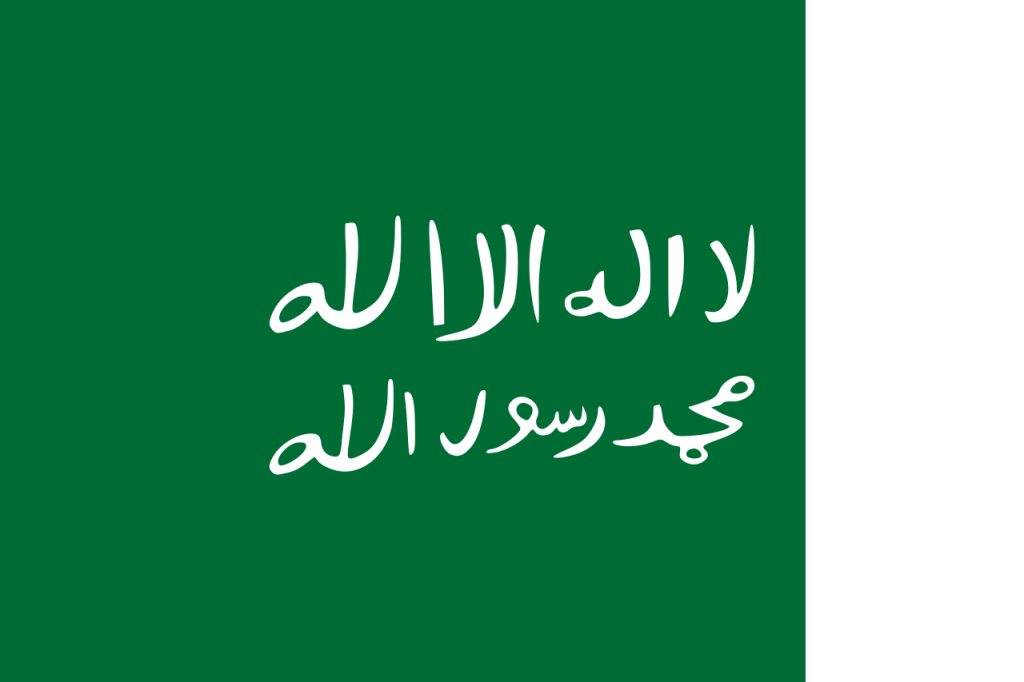
The earliest and longest-lasting Saudi flag, beginning as the flag of the Emirate of Diriyah all the way back in 1744. Featuring the same green background, but also a solid white edge on the right-hand side similar (though reversed) from that of the modern Pakistani flag, it does however lack a few important elements. The sword is gone and the inscription of the shahada is simplified, expressed as two distinct lines rather than the ornate, tightly-packed calligraphy of the modern flag. It is still almost unmistakably of Saudi origin.
It doesn’t seem to have been the only flag from this time. A similar one existed for the emirate with the same green background and instead of the shahada, a large, thin white crescent moon nearly filled the middle of the flag. This latter flag would remain in lesser use until 1891 with the fall of the then Emirate of Nejd. The former remained consistent through the first Saudi state (1744-1818) and the second (1824-1891). The third state, the Emirate of Riyadh (1902-1913) saw the calligraphy updated.
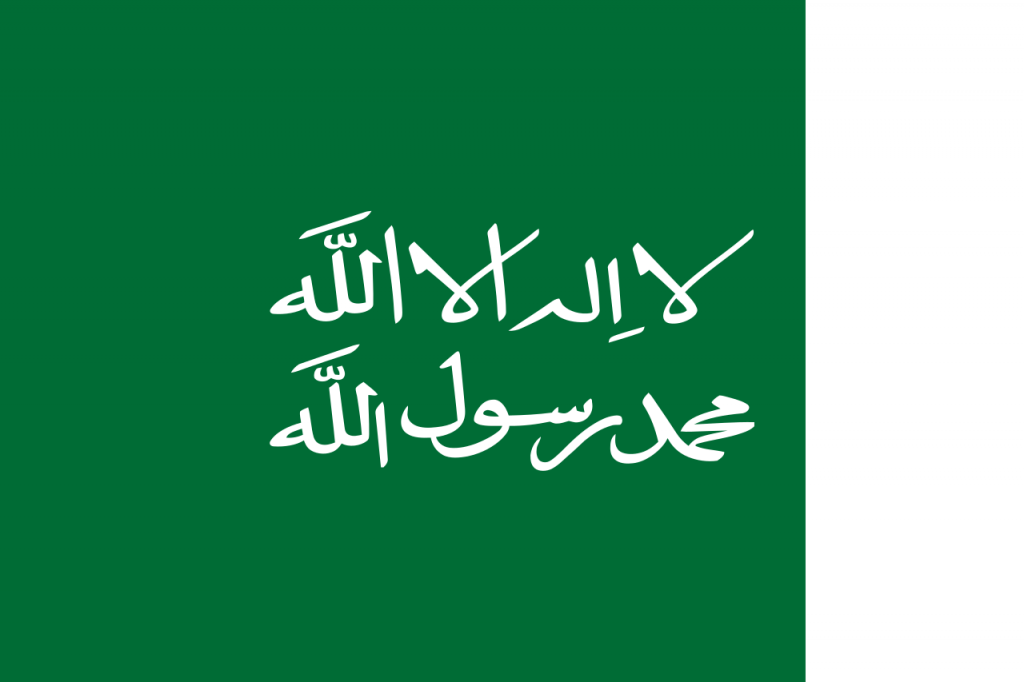
During this long period of history, the focus was less on statehood than on spreading the Wahhabi branch of Islam throughout the Arabian peninsula and beyond, which is likely why two flags existed in tandem for such a long time. These weren’t the only flags in the region of course, merely the ones belonging to the house of Saud itself, the actual Saudi Arabian flags as opposed to merely Arabian flags.
Later Saudi Flags
When the Emirate of Riyadh (which encompassed the Arabian region of Nejd) seized the Al-Ahsa (Hasa) oasis in 1913, the flag was changed to add two crossed swords, possibly representing the two union of the two regions, as well as setting up the reputation reputation for Islamic law and order. This was also notably not long after the formation of the Saudi military force, the Ikhwan, whose flag already contained the left-pointing singular sword. The Ikhwan served both as military and as a major force for religious education and settlement by formerly nomadic Bedouins, which may be a further reason for the symbol’s prominence.
When the Emir of Riyadh declared himself Sultan over Nejd in 1921, the flag changed once more, reverting to only one sword. While it may appear identical to the sword used in the modern Saudi flag at first glance, it can be seen that the handle is very different and the blade curved, something that would be edited in the future. At this point, the sword was now identical to the one on the Ikhwan flag, further cementing their influence on the nation as a whole.
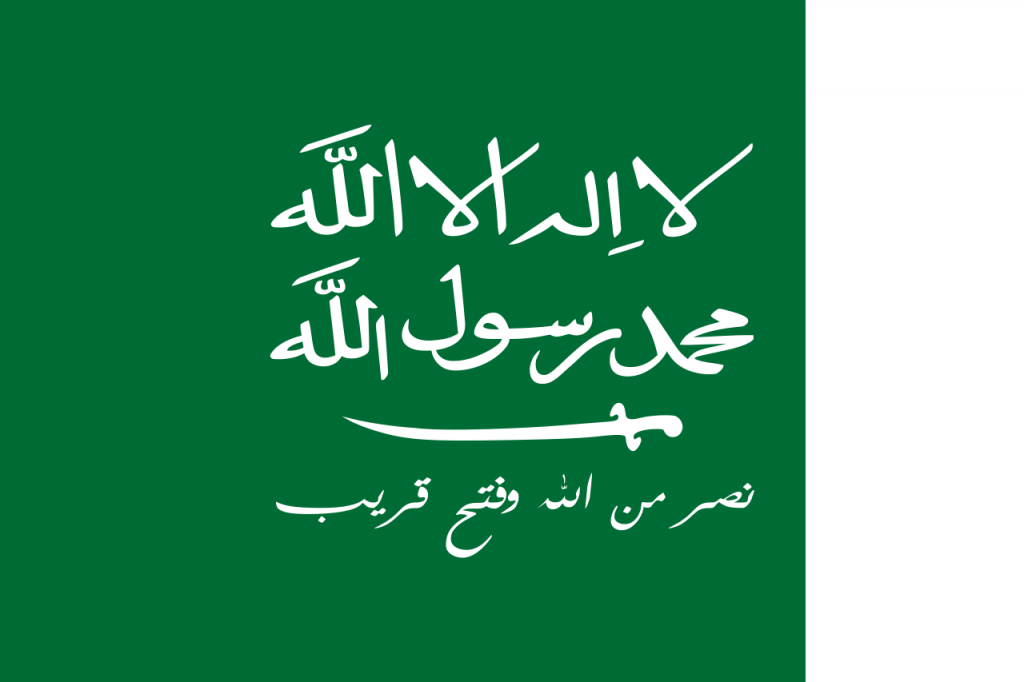
The Kingdom of Hejaz and Nejd was founded in 1925 after the annexation of the Kingdom of Hejaz, encompassing vast swathes of western coast of Arabia, including the holy cities of Mecca and Medina. Their seizure marked Saudi conquest of most of the Arabian peninsula and naturally deserved a switch-up with the flag. The sword was brought under the shahada, perhaps to represent the authority of Allah being above that of the state’s authority, as well as to provide a break for the new set of text. This translates as “Help from Allah and victory is near”, meaning that with faith in Allah, victory is always near.
It certainly must have felt near when the long-time enemy of the Ottoman Empire was defeated, the holy cities came under Saudi control and almost all regional enemies were pacified. The only barrier to singular control was this was indeed two kingdoms. While both led by the house of Saud, Hejaz and Nejd were separate entities and administered differently. It wasn’t until 23 September 1932 that Saudi king Abdulaziz declared the unified Kingdom of Saudi Arabia and there was a true flag of Saudi Arabia.
Saudi Flag Changes
The flag changed several times over the next few years. The 1932 version is starting to look very much like the modern one, but with a few differences. First of all, the big white stripe is still there. The sword is still curved, but has been redesigned with a new handle including five small holes. Most notably however is that the shahada has now reached its modern form, intricately designed and expressed as one block of calligraphy rather than two lines. Far more artistic. In 1934 it changed once more to reduce the white stripe in size, allowing the calligraphy to grow and the sword to be closer to it.
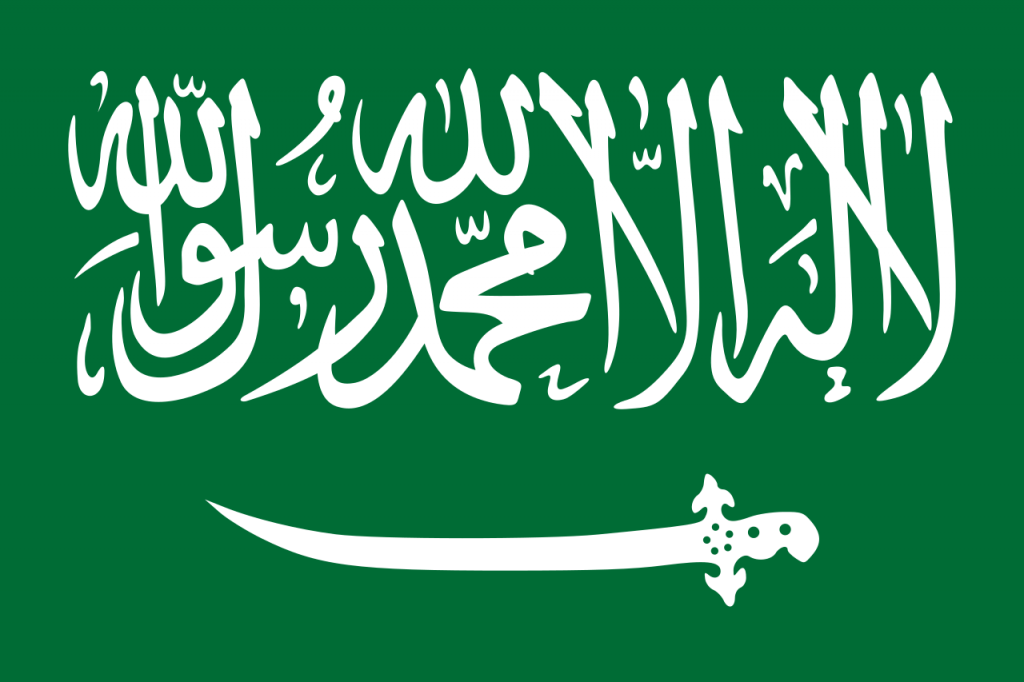
The flag changed once more in 1938, outright removing the white stripe at last to let the script almost fully encompass the green plain, while the sword gained two additional holes on the handle. This is how the flag remained for decades, until one final change in 1973 to shrink the text and completely change the sword to a much straighter, differently handled one. This is how the flag of Saudi Arabia looks to this very day.
The Royal Flag

As Saudi Arabia is a monarchy, there’s an additional flag for the royal family. The emblem of Saudi Arabia, adopted in 1950, consists of two crossed swords and a palm tree. The swords represent the Islamic authority, while the palm tree represents progress and prosperity, something guaranteed only by the swords. You might notice that the swords themselves are the old crossed swords from earlier iterations of the flags, maintaining the curved blades and everything.
Most notable of all of course is the gold colour. The King of Saudi Arabia has a gold emblem while the crown prince is followed by flags that keep the colour of the emblem white. These were preceded by earlier royal standards, typically consisting of the shahada accompanied by various crossed swords underneath, occasionally with gold trim, but I’d say we’ve covered about enough so far. These are the flags of Saudi Arabia!



